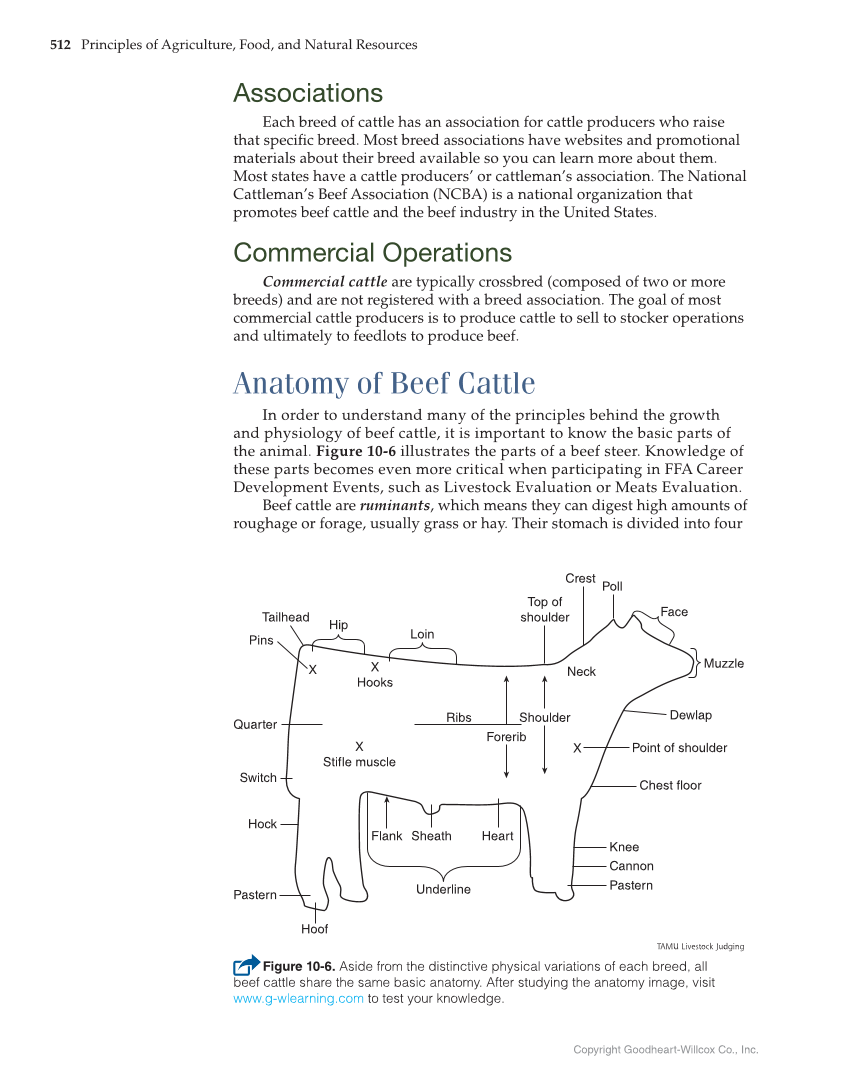Associations Each breed of cattle has an association for cattle producers who raise that specific breed. Most breed associations have websites and promotional materials about their breed available so you can learn more about them. Most states have a cattle producers’ or cattleman’s association. The National Cattleman’s Beef Association (NCBA) is a national organization that promotes beef cattle and the beef industry in the United States. Commercial Operations Commercial cattle are typically crossbred (composed of two or more breeds) and are not registered with a breed association. The goal of most commercial cattle producers is to produce cattle to sell to stocker operations and ultimately to feedlots to produce beef. Anatomy of Beef Cattle In order to understand many of the principles behind the growth and physiology of beef cattle, it is important to know the basic parts of the animal. Figure 10-6 illustrates the parts of a beef steer. Knowledge of these parts becomes even more critical when participating in FFA Career Development Events, such as Livestock Evaluation or Meats Evaluation. Beef cattle are ruminants, which means they can digest high amounts of roughage or forage, usually grass or hay. Their stomach is divided into four Tailhead Quarter Switch Hock Pastern Hoof X Pins X Hooks Top of shoulder Crest Poll X X Stifle muscle Shoulder Neck Forerib Dewlap Point of shoulder Chest floor Knee Cannon Pastern Sheath Heart Ribs Flank Hip Loin Face Muzzle Underline TAMU Livestock Judging Figure 10-6. Aside from the distinctive physical variations of each breed, all beef cattle share the same basic anatomy. After studying the anatomy image, visit www.g-wlearning.com to test your knowledge. 512 Principles of Agriculture, Food, and Natural Resources Copyright Goodheart-Willcox Co., Inc.
